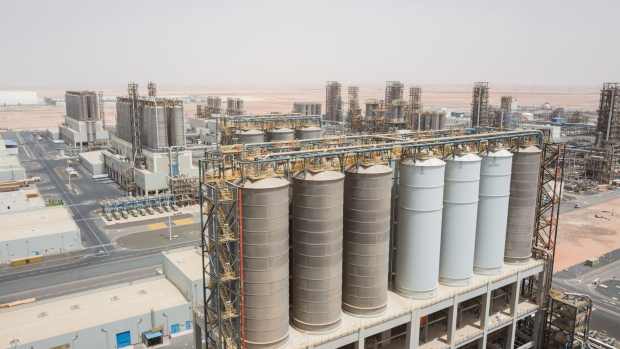May 2, 2024
UAE’s Oil Giant Raises Capacity Numbers Ahead of OPEC Meeting
, Bloomberg News

(Bloomberg) -- The United Arab Emirates’s main oil company said it had bolstered its production capacity, a month before the country meets with fellow OPEC+ nations to decide output levels for the second half of 2024.
Abu Dhabi National Oil Co. is able to pump 4.85 million barrels a day, according to its website, up from 4.65 million a day at the end of last year. The expansion also illustrates a theme that has gripped the Organization of Petroleum Exporting Countries for years and could impact its meeting next month: that while the group is withholding oil supplies, a key member is eager to use them.
OPEC+ is currently restraining output to prevent a global surplus and shore up prices. But in recent years Abu Dhabi has been eager to deploy new investments in production capacity, leading to occasional clashes with OPEC’s leader, its Gulf neighbor Saudi Arabia. A spat over the issue nearly shattered the OPEC+ alliance about three years ago, before a compromise was found.
In 2022, Adnoc laid out a $150 billion spending plan that included accelerating oil capacity additions. Abu Dhabi now holds more than 1 million barrels-a-day of idle supply, and blamed the sacrifice imposed by OPEC+ quotas when it lowered economic growth projections last month. The emirate is hoping that its higher capacity will be recognized by OPEC, according to an official who asked not to be identified.
“This is ultimately the UAE flexing its muscles,” said Viktor Katona, head crude analyst at market intelligence firm Kpler Ltd.
Diversified Economy
While Riyadh often advocates caution when adding supplies to the market, the UAE sometimes takes a conflicting stance. Abu Dhabi still relies on strong oil prices, but its economy is arguably the most diversified among Gulf neighbors and faces less pressure to keep oil prices high.
And in contrast to the UAE’s ongoing expansion, Saudi Arabia paused plans earlier this year to boost its production capacity by about 8% to 13 million barrels a day. Abu Dhabi plans to raise its capability to 5 million barrels a day by 2027.
“I don’t think they’d be stubbornly demanding a production target hike, but they definitely want the larger oil market to know that Adnoc has the reserves, has the capacity,” Katona said. “And all it takes to unleash that oil bounty is one political decision.”
The dispute over how much the UAE can pump arose again at OPEC+ meetings last year.
Abu Dhabi successfully lobbied for a higher production baseline — the starting point from which OPEC+ cuts are calculated — but the gain came at the expense of several African members, who had to accept lower quotas in exchange. The spat contributed to the exit of Angola from the group, ending decades of membership.
Part of the resolution was that OPEC+ would conclude a review of members’ capacity levels by the end of June, based on assessments by three external consultants: IHS, Wood Mackenzie and Rystad. The findings will be used in calculating output baseline levels for 2025.
Traders and analysts widely expect that OPEC+ will agree to extend its current supply restraints into the second half of the year when it gathers in Vienna on June 1, as members will find common cause in faltering prices and a fragile economic backdrop.
But if the group’s history is any guide, recognizing the UAE’s growing ambitions could be a key part of the negotiations.
(Updates with analyst comment in the fifth paragraph.)
©2024 Bloomberg L.P.






